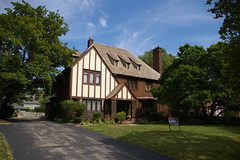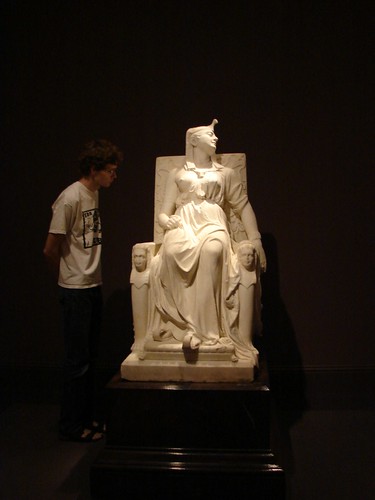Over the holidays, I talked with my father-in-law, an HVAC tech, about my current boiler and possible future options. Our system is hot water, which lends us to greater efficiency potential than is possible with a steam heat system. He had just installed a Burnham Alpine boiler in the church across the street, and had primarily good things to say about the company. As a tech, he appreciates that it is still easy to get parts, quickly, for 35+ year old systems, while some other manufacturers discontinue parts after 10 years.
Although he wasn't able to give specific numbers, he thought, given our usage, that a new boiler would probably pay for itself in 5 or so years. The problem becomes then one of determining how we will pay the $5000-7000 that it will probably cost for the purchase and installation of the system.
The issue that this brings to mind for me, however, is one of venting. The Burnham Alpine uses PVC pipes for ventilation. High efficiency boilers and hot water heaters have special ventilation requirements to meet and as a result of their higher efficiency. They draw air in from outside because it is cleaner, and therefore burns more efficently than, say, sawdust or humidity laden air. They must exhaust outside, rather than into the chimney because their exhaust is cooler, more humid, and more dense, and would lead quickly to the collapse of the chimney in just a few years.
The normal installation would be to just run the vent pipes through the wall of the house. I find the idea of two bright white PVC pipes poking through the wall of my house rather unattractive. Yes, they could be painted to match the brick, but I'm still not completely comfortable with that solution.
One alternative that my father-in-law suggested was to run the vent pipes up the existing chimney. Our boiler and hot water heater use one chimney, while our fireplaces use another, so this wouldn't be a problem. He thought it wouldn't be too difficult to run things that way - just a matter of dropping two or three lengths of PVC pipe down the chimney. While this would cost more, I think the result is worthwhile.
This all leads me to thinking about the hot water heater and its eventual replacement with a tankless model. Tankless hot water heaters have their own special ventilation requirements, which seem to tend toward stainless steel, but which could probably be fit into the chimney if necessary. If I could settle on one system, it seems that it might be reasonable to drop in the vent pipe for the water heater at the same time as the vent pipe is being installed for the boiler.
Of course, I'd love to hear other ideas, including less ugly ways to conceal vents run through walls.
Monday, December 29, 2008
Thinking Warm Thoughts
Labels:
basement,
boiler,
chimneys,
future plans,
hot water heater,
hvac,
our house,
plumbing,
venting
Subscribe to:
Post Comments (Atom)


4 comments:
Our boiler vents through the side of the foundation but is capped by a small brown square (less than a foot square). The square sits away from the foundation by about an inch. cold air is drawn in along the sides and the exhaust is sent out through a hole in the middle.
It's very unobtrusive. Unless it's code to have ugly white PVC pipes sticking up, there are probably other options available. It may force you to talk to non-family members though.
I dream about putting in GeoThermal someday. I'd be interested to know if such a thing is possible with warm water radiator heat.
Hi there,
Just visited your blog through a comment you posted on mine. Great house you have there and I enjoyed reading your blog.
We are in the process of upgrading our heating sytem, so I thought I'd give you a bit of information on ours in case some of it might apply to yours.
We're upgrading our 85 year old boiler with a 93% efficient unit, venting out of a small window. The window will be completely boarded up for the vent pipes. The current window is just two pieces of plexi-glass held in place by what looks like chewing gum, so it's no great loss. The vent pipes will be small enough that they won't look too bad from the outside.
In addition to the boiler, we're getting an indirect hot water heater. The water is heated via the boiler and stored in a 40 gallon tank. If you run out of hot water, the boiler fires up to heat more water for you, up to 5.5 gallons per minute, so you more or less have infinite hot water. The whole system is very efficient and no extra vent pipes for the water heating system.
If you do upgrade your boiler, look for one that is condensing, and modulating. Modulating means it can fire at various BTU rates, and adjust to the heat you need, rather than just on and off. Condensing boilers are very efficient, but do require drainage into your waste water for the condensate. We're getting one called the NTI 200. Email me if you need more info, or stay tuned for a future blog post on our blog.
Forgot to comment on what Mr. Kluges said... You can get geothermal for a hot water rad system, but unless you also have forced air A/C, you don't get as much of an investment return on it.
NP - I'll be interested to hear how your installation goes and how it works out there in the RealWorld ™. It's going to be at least two years until we can fit a new boiler into our budget, so I'm more than happy to wait for your blog posts about.
From what I can tell, indirect hot water systems wouldn't work that well given our current plumbing situation. The boiler and hot water heater are separated by a loadbearing masonry wall. The plumbing for the two is mostly separate while in the basement. Aren't anti-scald devices also part of those systems, which I would think would add an additional level of complication?
I look forward to reading more about your adventures with such a lovely house.
Post a Comment